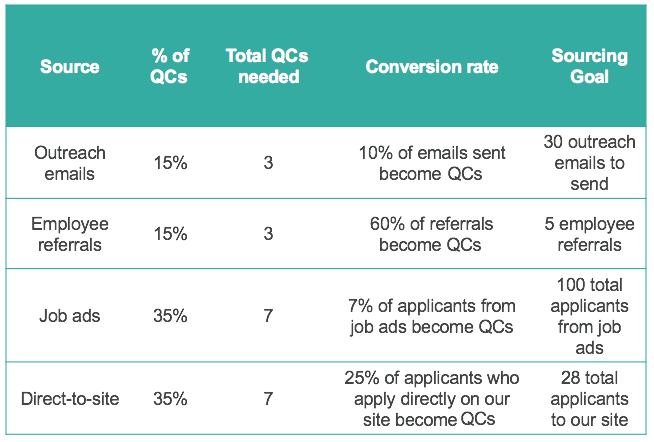We’ve all heard the wise words before: You shouldn’t put all of your eggs in one basket. Whether we’re talking about investing our money or sourcing candidates, this adage rings true. Yet, as sourcers and recruiters, we are often guilty of going back to the same old sources that have served us well in the past, whether they are likely to be the most effective channel for the particular candidate we are searching for or not.
One of the best methods for avoiding the eggs-in-one-basket predicament is to focus on having a diversified sourcing strategy with data-based goals for each source. Here’s a high-level, three-step process for instituting this framework at your organization. We’ve been using this at Greenhouse for the last year and have seen a dramatic improvement across all of our recruiting metrics.
- Identify and categorize all sources for easy tracking
There are four main sourcing channel buckets that can generally encompass all candidate sources. For example, you might post an ad to GitHub when hiring a tech role and use a LinkedIn job slot for a sales professional, but both could fall under the ‘Job Ads’ bucket for reporting and tracking.
- Outreach emails
- Employee referrals
- Job ads
- Direct-to-site applications
- Set goals for total “Qualified Candidates” per source
The most effective way of diversifying your sourcing strategy is to set goals for diversification. First, the recruiter and hiring manager should set a goal for total Qualified Candidates (QC) for a given role. A QC is a candidate who makes it past the ‘application review’ milestone, generally moving into the first phone screen stage. From here, you can further break down the QC goal by source.
These breakdowns can vary by role. For example, for a senior VP candidate, I would expect to have a higher percentage of QCs from referrals and outreach emails, whereas, with an entry-level sales professional, I would set a lower goal for outreach and assume more QCs will come from job ads. Here’s a rough guideline for how to break goals down:
- Outreach emails: 15% of QCs
- Employee referrals: 15% of QCs
- Job ads: 35% of QCs
- Direct-to-site: 35% of QCs
- Use conversion rates to determine level of sourcing activity needed to hit QC goals
Each source converts to QCs at different rates. For example, the accepted metric for a good response rate from an outreach email is 10%, so in order to get five QCs from active outreach, a recruiter should plan to send about 50 outreach emails. Depending on your organization, employee referrals could convert to QCs as high as 75%, so getting 5 QCs from referrals would mean you’d only need to get seven referrals for that role.
An Example
I find it easiest to visualize my sourcing goals by putting the numbers into a table. Let’s say I estimate the following milestone conversion rates for a marketing manager:

Based on these numbers, I would set a goal of 20 Qualified Candidates to set me up to have one hire at the end. (It actually comes to 18.8, but 20 is an easier number to work with and it doesn’t hurt to throw an extra QC or two into the mix).
Then I’d take that goal of 20 QCs and back into sourcing activity goals for each source.

By taking a data-based view of the sourcing and hiring process, you can develop a more proactive approach to every open job and continually enhance the recruiting process. As a result, you can bring in more qualified candidates that are ready to drive business performance from day one.
